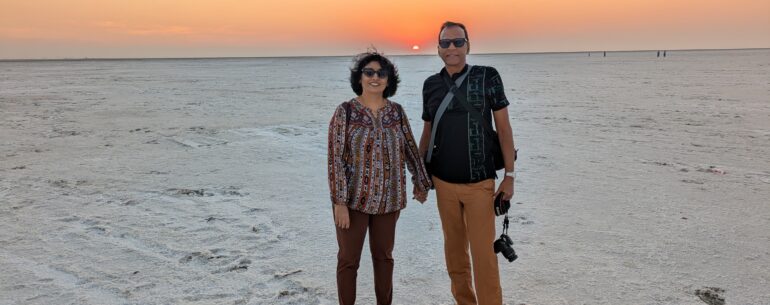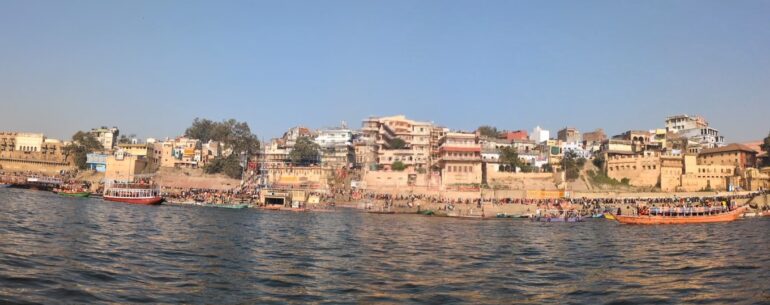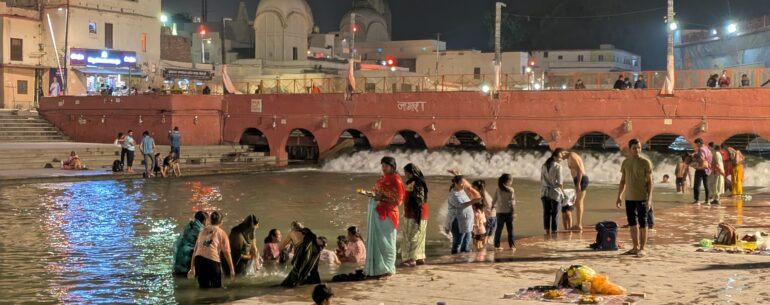A vast expanse of salty marsh, the Great Rann of Kutch in the state of Gujarat is a unique creation of nature. Also called the White Desert, this vast white landscape is stunning in its simplicity and counts among the largest salt marshes in the world. Quite appropriately, Rann Utsav during winter celebrates this unique marvel of nature and the rich cultural and artistic heritage of Kutch region. Without doubt, visiting the Rann of Kutch during Rann Utsav has a special feel.
The aftermath of Kutch earthquake
In 2001, an earthquake had devastated the Kutch region of Gujarat. Rann Utsav was inaugurated in 2005 to draw tourists to Kutch and provide employment opportunities to the locals. From a 2 day event initially, the Rann Utsav now runs for over 3 months. More importantly, it also ensured build up of required infrastructure to cater to tourists. Not surprisingly, the number of visitors is expected to top 1 million in 2024-25 season(Nov 11, 2024 to March 15, 2025). All of us would have heard of innumerable stories around the world on how a calamity changed the destiny of a region. Kutch will always be part of that story.
For information, Kutch district is located in a ‘very high seismic zone’. Minor tremors are quite common, and as per newspaper reports, there were minor tremors once each in November and December 2024!
Rann was originally part of Arabian sea
It is very interesting to note how the Rann(literally meaning desert) originated. During the period of Indus Valley or Harappan Civilization, Rann of Kutch was the shallow part of Arabian sea. Dholavira, the Indus Valley Civilization site and located over 150kms from the seashore today, was actually a seaport! Frequent earthquakes over the years and the consequential land uplifts pushed the sea back.
No need to travel half way across the world to Bolivia
Salar de Uyuni in Bolivia is the largest salt flat in the world, with an area exceeding 10k sq. kms. The Bonneville salt flat in Utah State, USA is also famous, though much smaller in size at ~121sq. kms. I tried to figure out the distinction between a salt marsh and a salt flat and why the Great Rann of Kutch is a marsh despite being away from the sea. Google did not have clear cut answers! But whatever, they do not look much different once water has evaporated. Salar de Uyuni was on my tentative list of places to visit whenever I plan a trip to South America. Now that is off!
Move to:
What to expect at the Tent City during Rann Utsav?
What is the approximate total cost?
Activities outside the Tent City
Is Rann of Kutch and the Rann Utsav a must visit?
The first view of the Rann is impressive
The Great Rann of Kutch is spread over an area of 7.5k sq. kms. Together with Little Rann of Kutch, the two adjoining areas are together referred to as Rann of Kutch(~30k sq. kms). A view-point has been created at the end of White Desert Road, few kilometers beyond Dhordo village, and just beyond the last outpost of the Border Security Force(BSF) before the Pakistan border.
As I alighted after a very short but delightful ride on a camel cart, all I could see till the horizon was a white carpet – the salt marsh, a thin layer of salt deposits over the soil. There were no constructions, no obstructions, not even plants. Very impressive first look. Given the number of visitors who walk on the marsh, it was a mix of black soil and white salt nearer to the road but as I walked away, the surface got whiter and whiter.
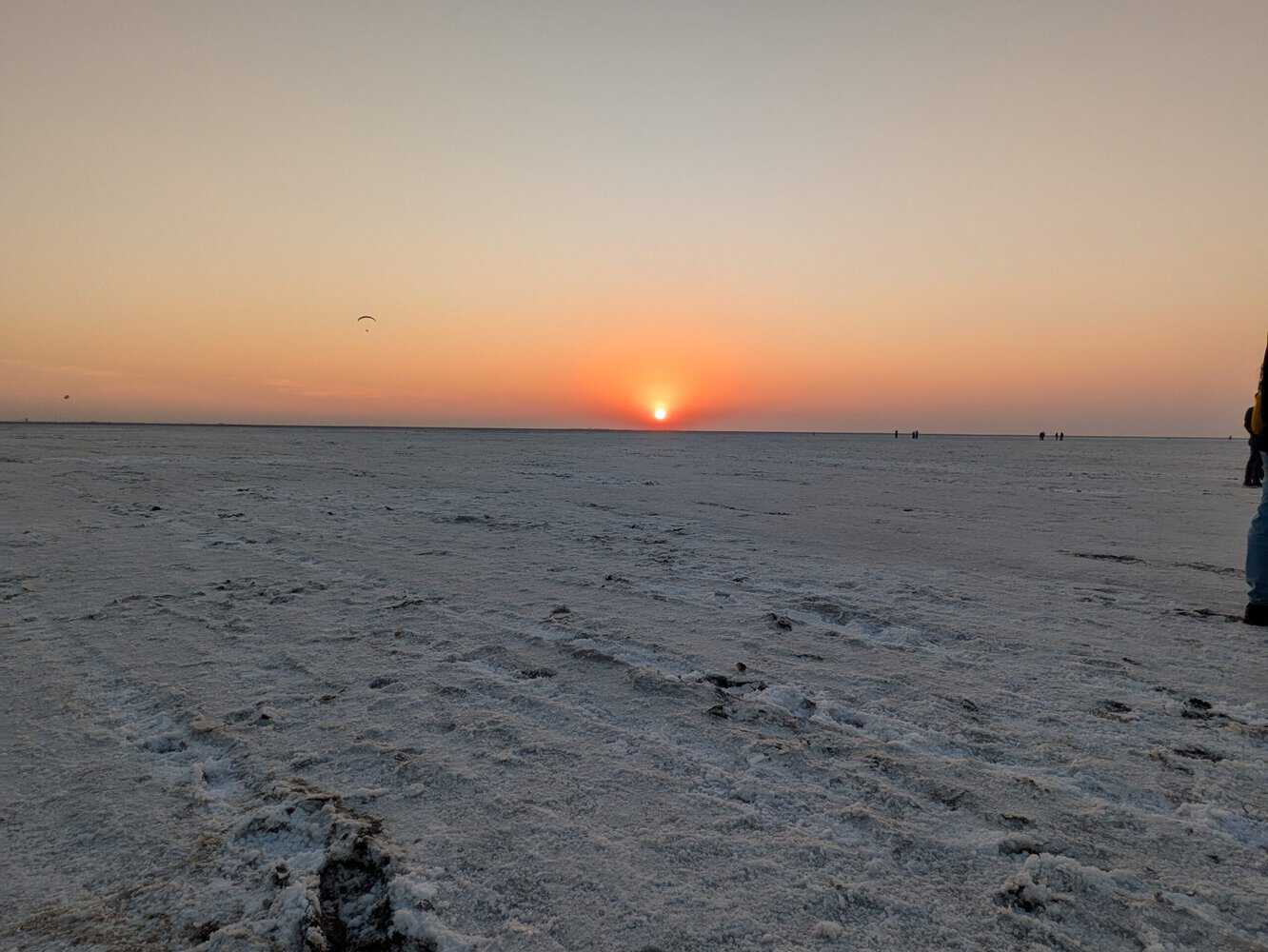
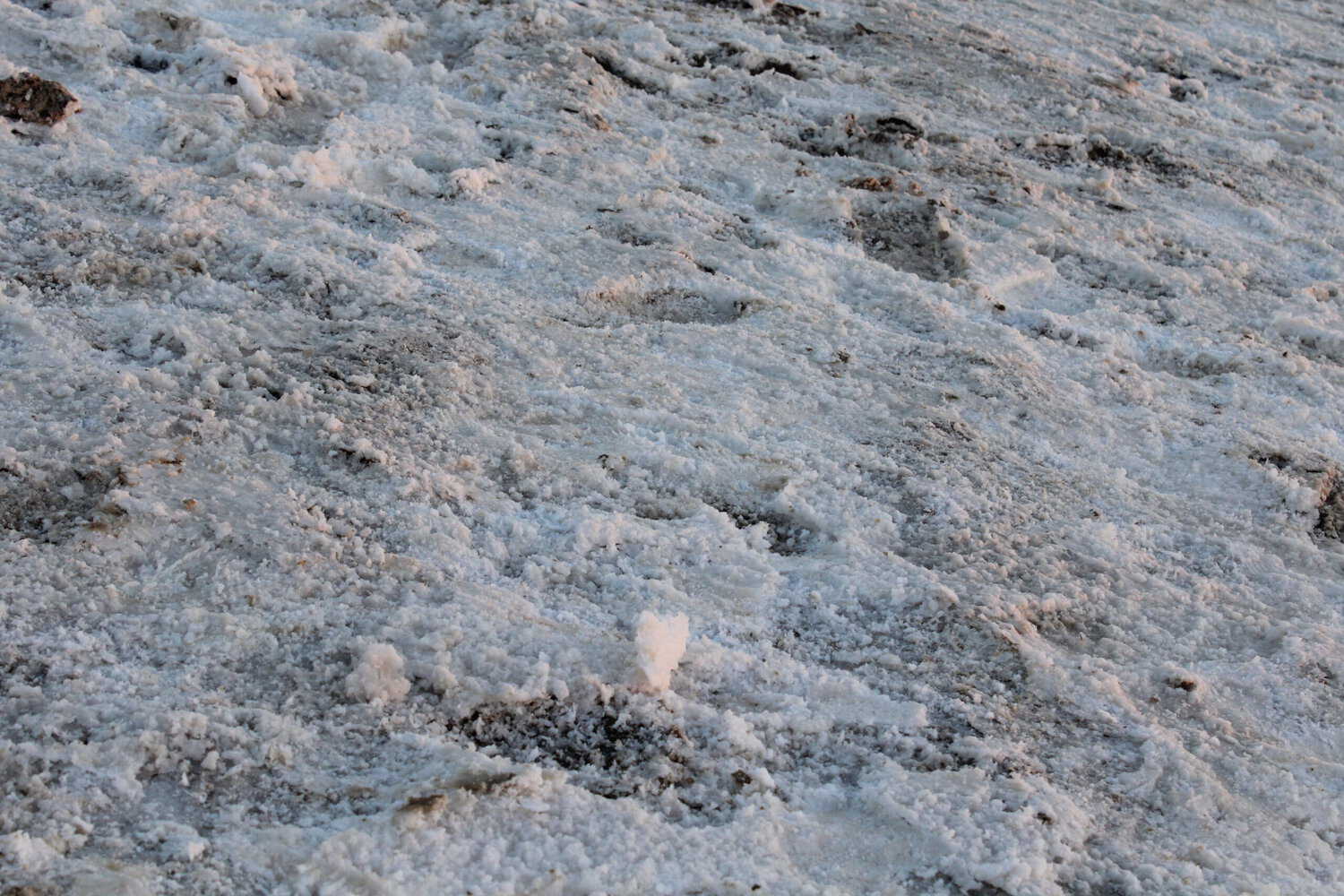
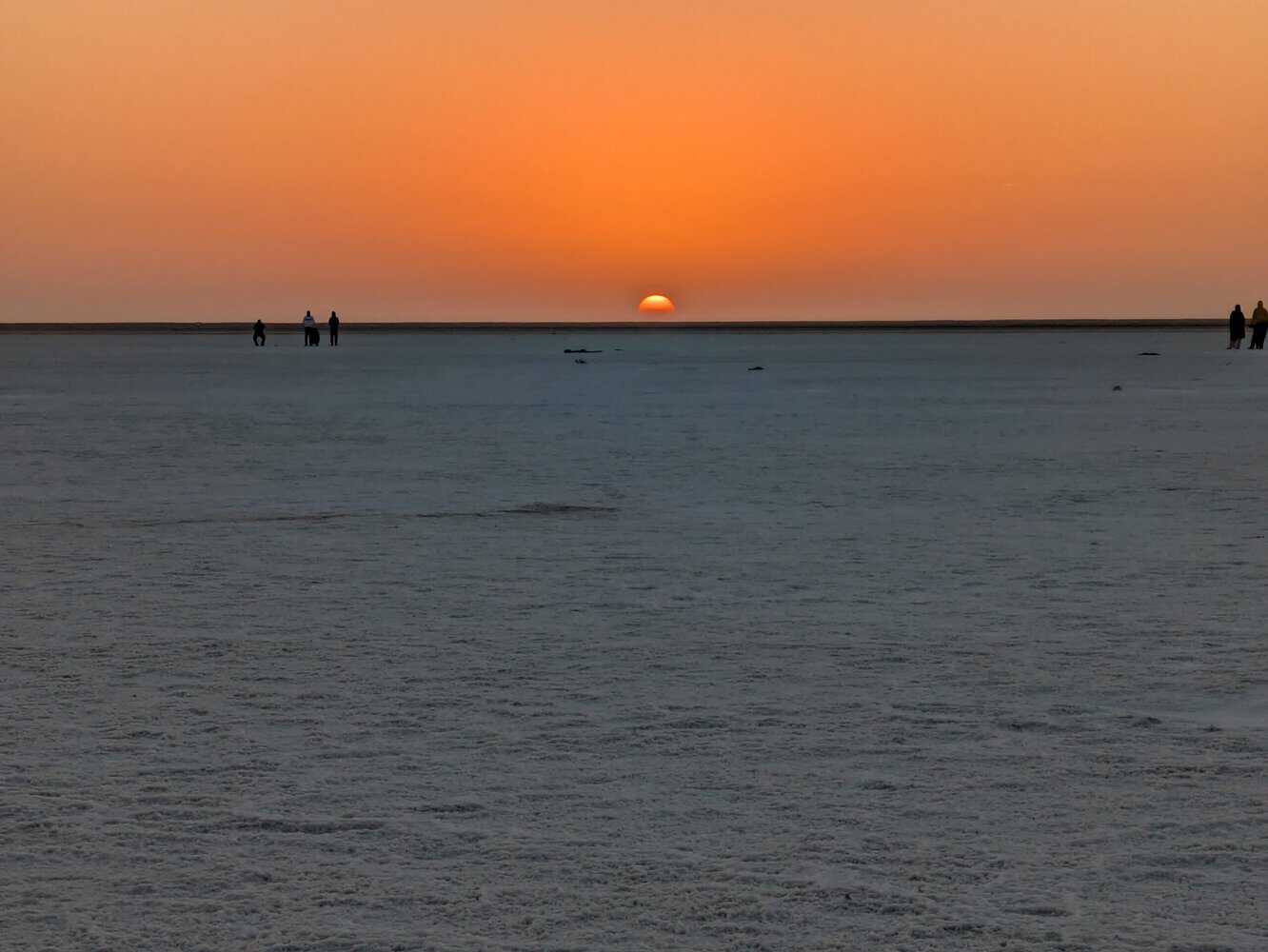
There is no road beyond the Rann view-point
The view-point lies a little beyond BSF post and there is no road beyond this view-point. I visited on a Sunday evening and there were lot of local visitors. Camel rides are available here, as also motor paragliding.
While I was impressed with the first view of the Rann, I was even more impressed with the Rann of Kutch Lake, on either side of Road to Heaven. Possibly because the lake bed was dry in few places and watery is other places. Best of both the worlds so to say.
What to expect at the Tent City during the Rann Utsav
- Comfortable tented accommodation;
- Decent vegetarian only food ;
- Cultural programs in the evenings;
- Inclusive tours such as sunrise/sunset visit to the White Rann, day long visit to Dholavira via Road to Heaven, half a day trip to Kala Dungar/Nirona village, visit to Mandvi;
- Optionals such paragliding, star gazing, cycling, camel rides in the night during full moon, adventure activities for kids;
- Leisure activities in the club house(carom, chess, table tennis etc.);
- Shopping at the various stalls set up inside the Tent City as well as outside;
- Buggy service.
Tent City has temporary infrastructure but is impressive
My overall experience at the Tent City was positive. The Tent City is spread over a large area and is dismantled and rebuilt every year. The main areas were tastefully set up and looks particularly attractive during the night. The accommodation tents are arranged in clusters, depending on the type. However, the surfaces are not even everywhere and one needs to be watchful while walking.
On the first 2 days of my stay, there was not much crowd but on the third day, the dining hall was quite crowded. I suspect full occupancy may imply longer queues for the buses, buffet food and buggies.
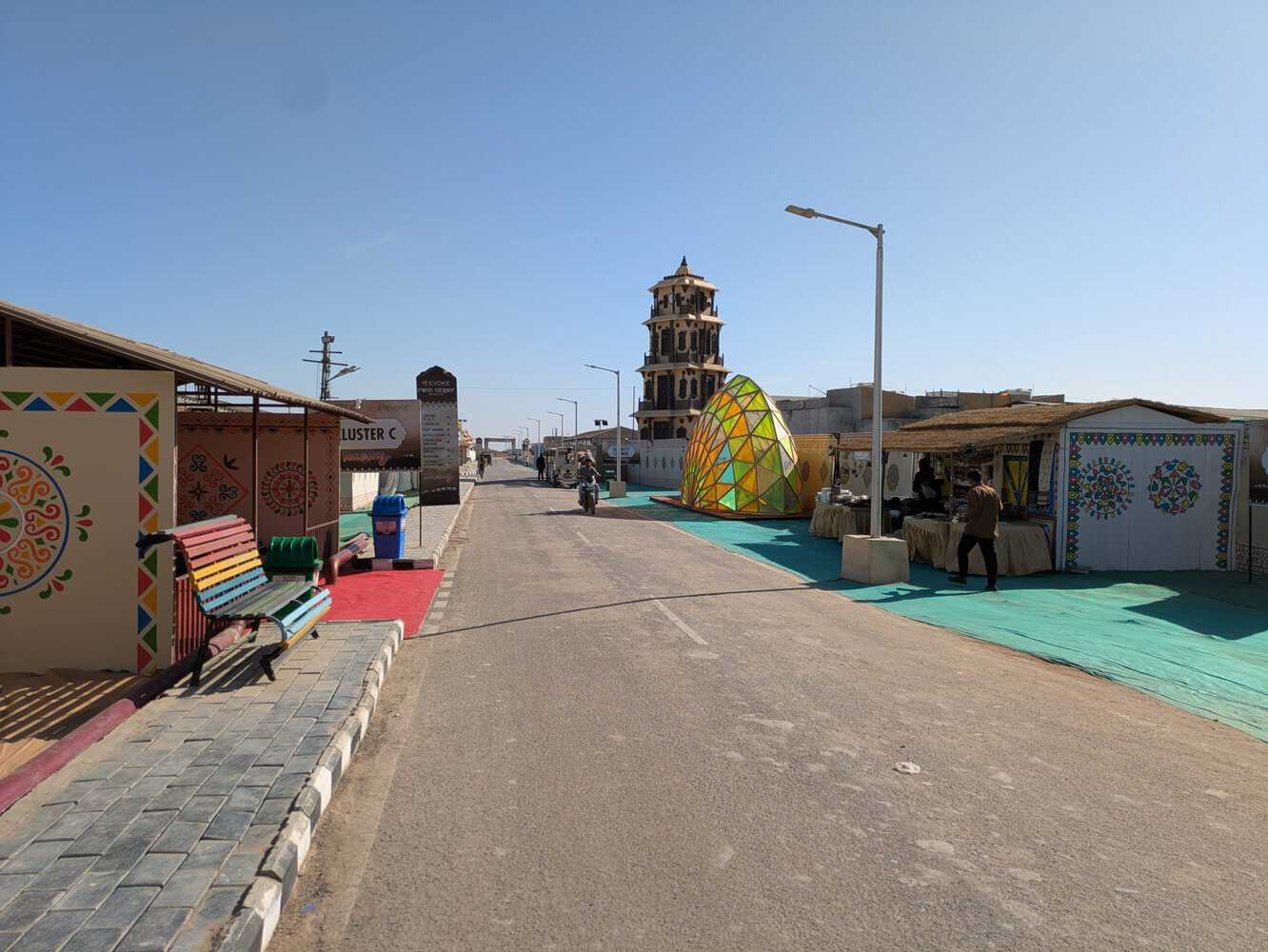
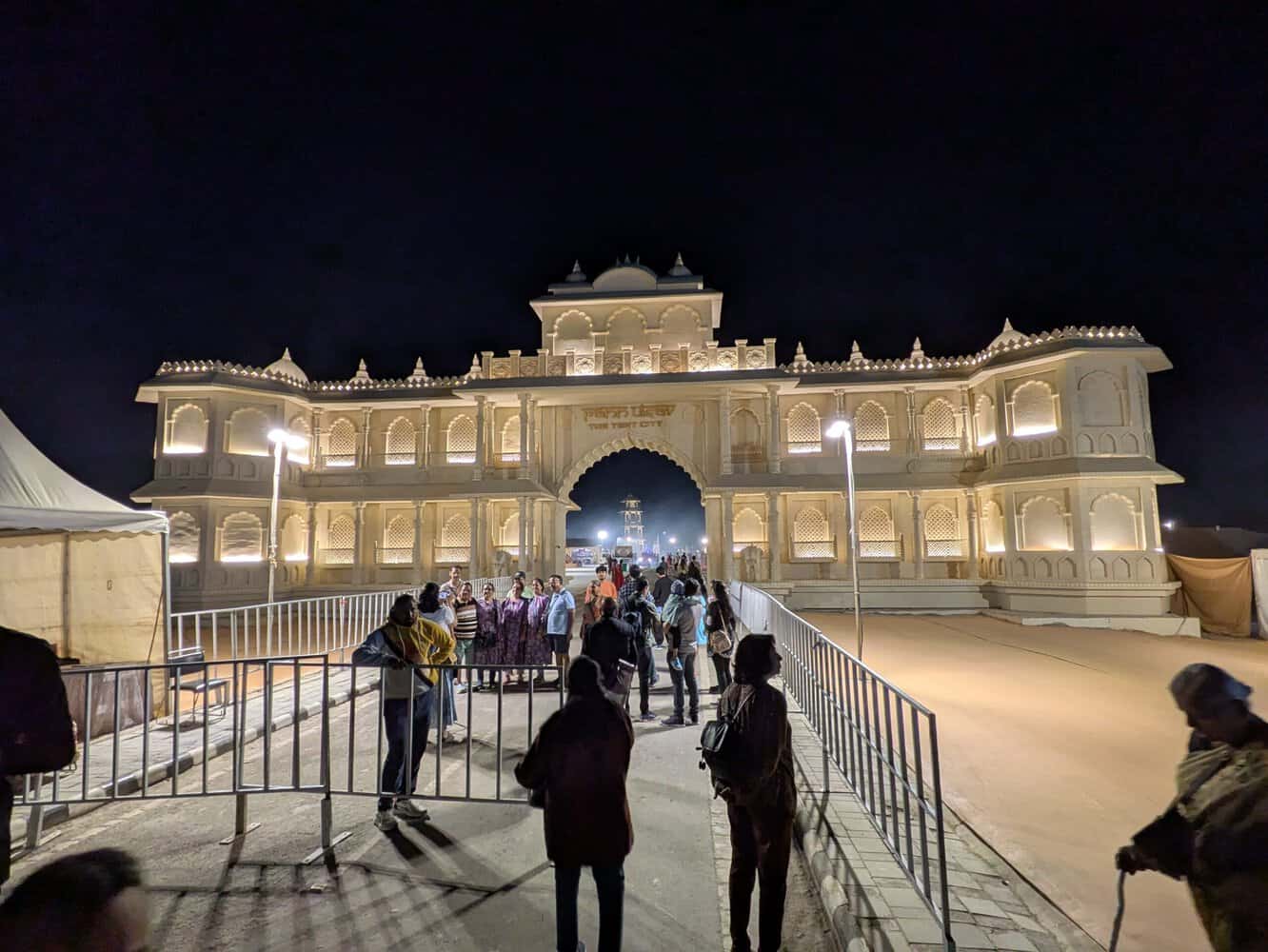
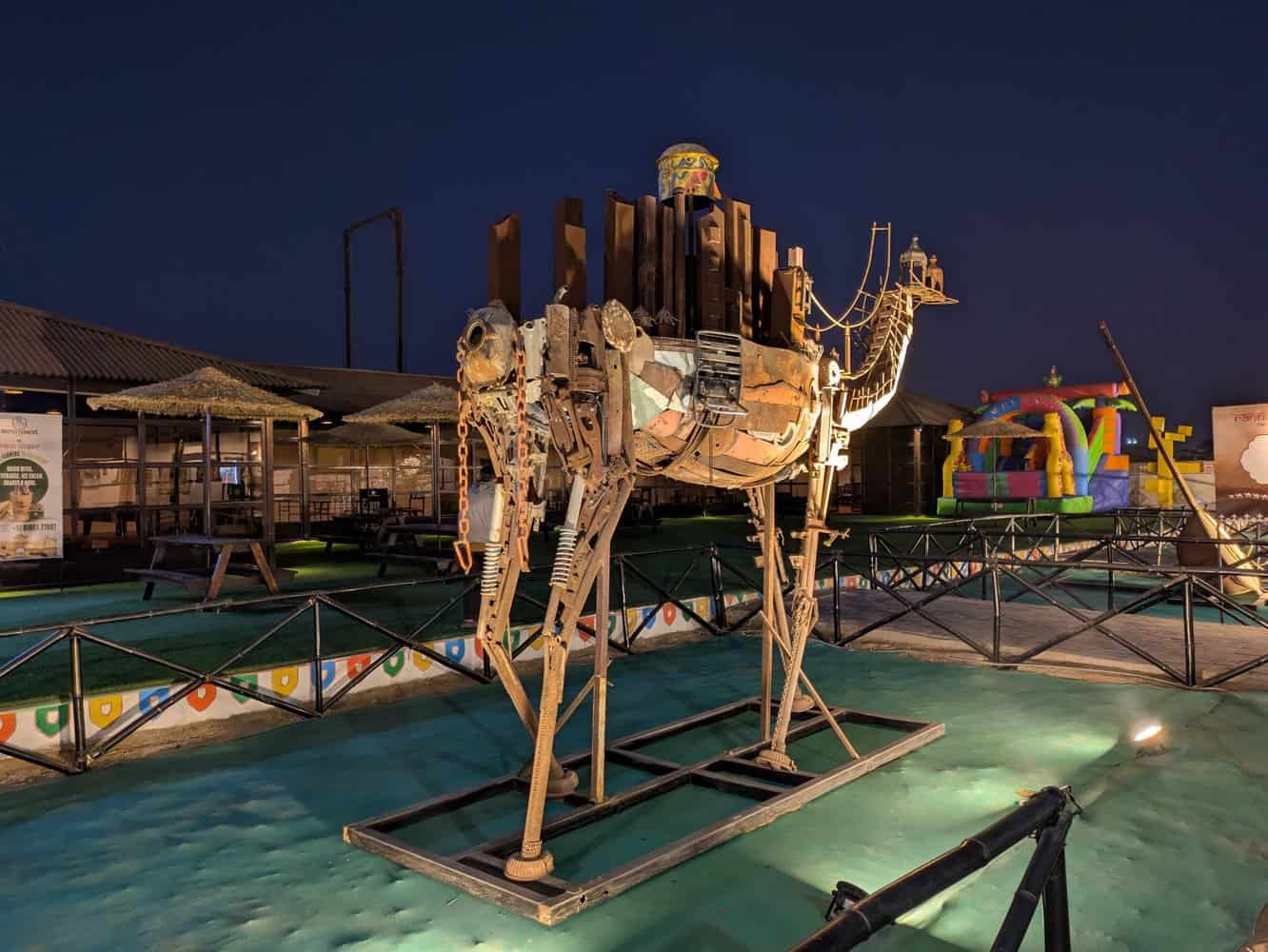
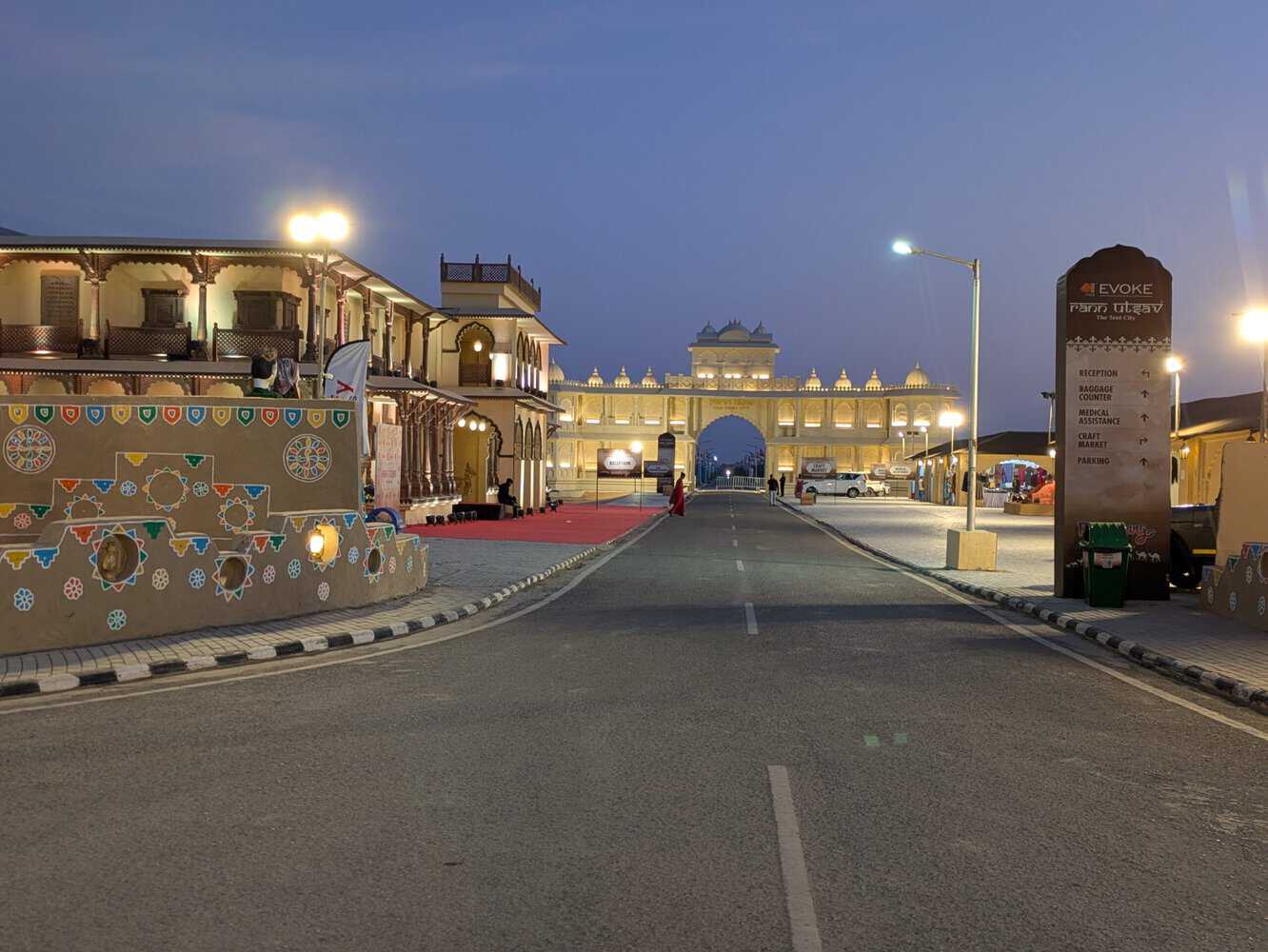
The area is dusty
So is everything positive? Not really. Kutch is an arid area, quite dry and dusty, despite receiving moderate rainfall during the monsoon season. The Tent City operator has done a fairly decent job of covering the entire ground with sheets but there were quite a few open areas. Vehicles and people moving around kicks up dust. While it is still quite ok inside the Tent City, it is not the same outside.
Beyond the salt marsh, this is how Kutch generally is.
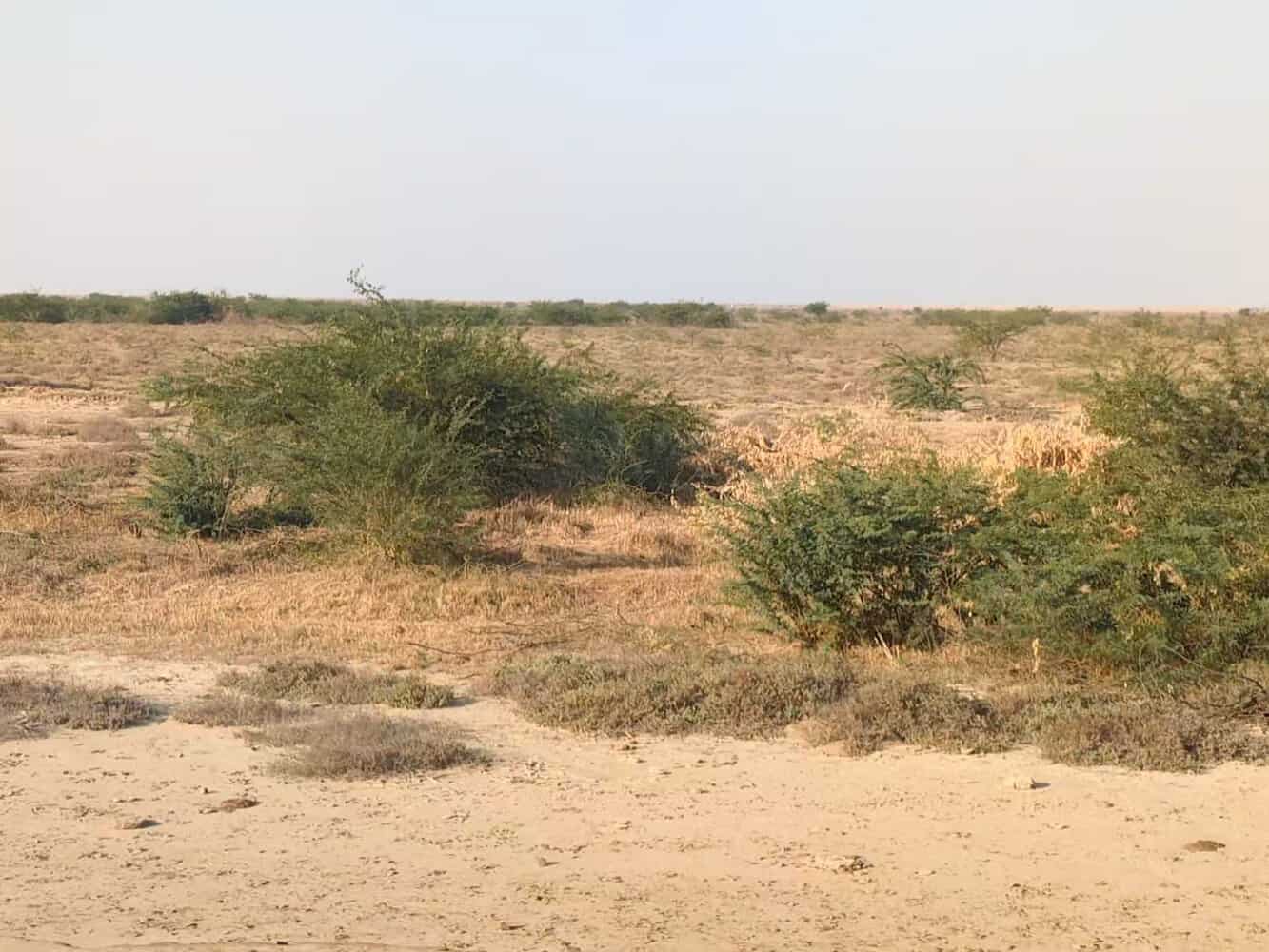
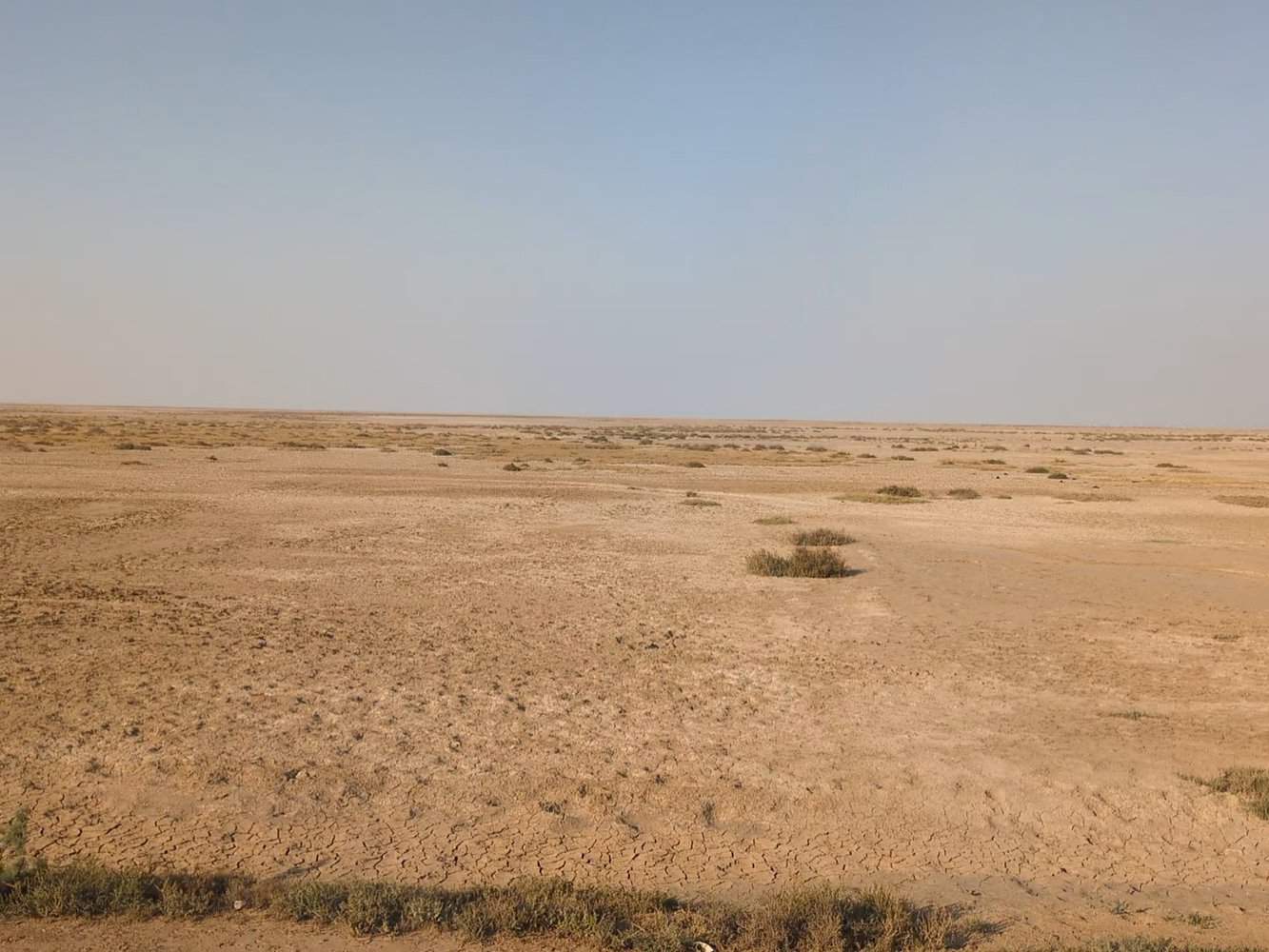
Is Tent City the only option to stay during Rann Utsav?
Not really. A stay at the official Tent City is probably the best option. The same operator also manages the White Rann Resort nearby which offers similar packages.
But there are quite a few other private resorts nearby which often cost less. Not sure if they offer similar packages but if you are not keen on the peripheral activities and only wish to see the White Rann, I guess other resorts/homestays near Dhordo may just work as well. Just ensure they can procure necessary permits to visit the Rann view-point. Or apply online.
Just outside the Tent City, there are a number of stalls, for shopping as well as eating, set up as part of the Utsav/festival. This area is open to all.
Types of tented accommodation at The Tent City
Apart from the suites (Rajawadi and Darbari), there are super premium, premium tents and AC/non AC Swiss cottages. Furnished very much like a hotel. Rates vary by the month and is higher during the 3 days of full moon. I travelled in the first 10 days of December and the cost was INR 30k per person for the 3N, 4D package in super premium tent. Strangely, super premium tent was not available for direct booking online but a travel agent was able to confirm the bookings!
The non AC Swiss tent had the lowest available price point at INR 17,500 for 3N, 4D .
Super premium tent is good
The super premium tent had a front porch with seating, including an ‘easy chair’. The double bed was comfortable and bath/toilet too was decent enough. Hot water is available 24/7. The geyser is placed a little away from the tent but hot water flows at a decent pressure. The size of the geyser is small which may trouble people who cannot finish bath even in 10 minutes!
The Tent was also furnished with a desk and chair, a seating area and a tea/coffee maker . Even then, there was sufficient space for an additional mattress. What needed getting used to was absence of a door, with a zipper serving that need! There was no locker and fridge but they available for use as needed in the reception building.
Wardrobe area needs improvement
Drawbacks include lack of proper wardrobe and adequate hangars/hooks to hang clothes. Fogging is done every evening but occasional mosquitoes find their way into the tent. Lighting is inadequate for reading during night.
Location of super premium tents is a big plus
All in all, quite comfortable. The biggest advantage of super premium tents is the location. Almost centrally located and close to the dining hall, cultural center, shops and reception.
Premium tents are similar but without AC.
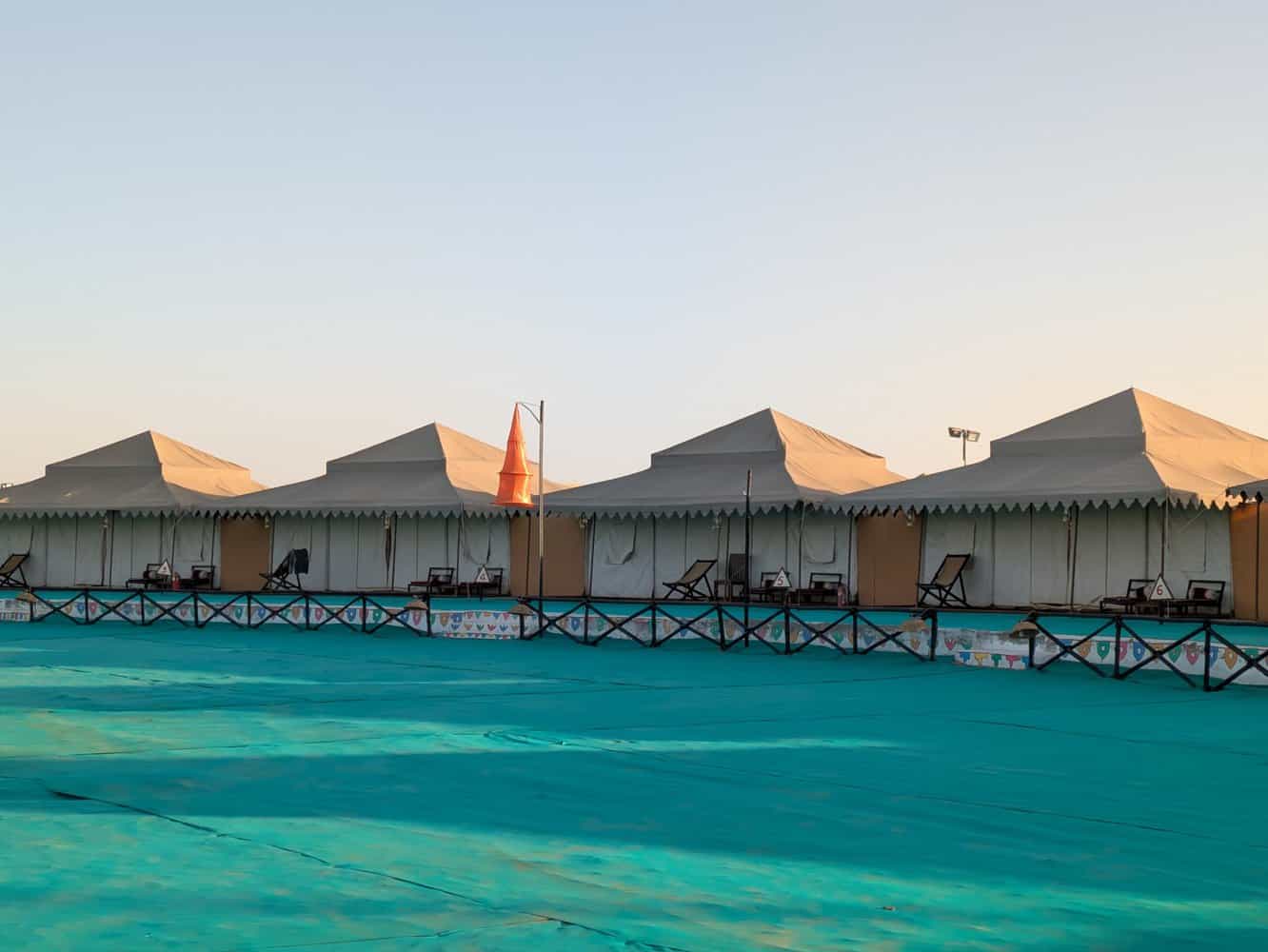


Available packages in the Tent City
A total of 4 packages are offered, from 1N to 4N. Sunset/Sunrise visit to the White Rann is common. Gandhi Nu Gaam/Kala Dunger, Dholavira, Nirona village and Mandvi are offered if you stay longer. The trips are fixed depending on the package duration and the only option I had for the 3N, 4D package was Dholavira or Nirona village. Mandvi, a beachside town, was offered in the 4N, 5D package when I made the booking but looks like it is not being offered any more.
Nirona village is famous for Rogan Art and brass artifacts. Since I had my own vehicle, I visited Nirona village on the way to Bhuj after check out.
The overall package cost, considering the add-ons, is quite reasonable. It is planned to keep everyone fairly occupied. The only downside, one may not be able to utilise all the add-ons.
What is the approximate total cost?
Package cost includes pick up from/drop to Bhuj airport and railway station. So technically, there is no real need to spend even a rupee more. But practically, there will be spends on shopping, tips, camel/jeep rides, optional activities and so on. One night in Bhuj with local sightseeing will cost under 10k per couple. So 3N in the Tent City in Super Premium Tent plus 1N in Bhuj adds up to ~INR 40k per person at the minimum.
Activities inside the Tent City
- club house where one can play table tennis, chess and other board games;
- art gallery that had some good paintings. Available for purchase;
- shopping – plenty of stalls selling local handicrafts, apparel, souvenirs etc. Few hand made stuff were quite expensive but most of the items are reasonably priced;
- adventure activities mainly for kids and youngsters;
- cultural programs every evening post dinner. Performances tend to repeat;
- spa-prices were higher than what I pay in Bengaluru! But works out well if one opts for a package(5 or 10 therapies)
- dining – Served in one big hall with a separate Jain counter and 2 general counters. Only vegetarian food was served. The food was quite ok with a mix of local and national cuisine. Few of the dishes were oily as that is the way food is generally cooked in Gujarat, but there were options for those who prefer non-oily food.
Activities outside the Tent City
Sunrise/sunset at the Rann view point
The few moments around sunset and sunrise were pure magic, with a natural stillness. But one needs to be away from crowd to experience the stillness. The camel cart ride during sunset view is free for the Tent City residents but tips are solicited for the camel!
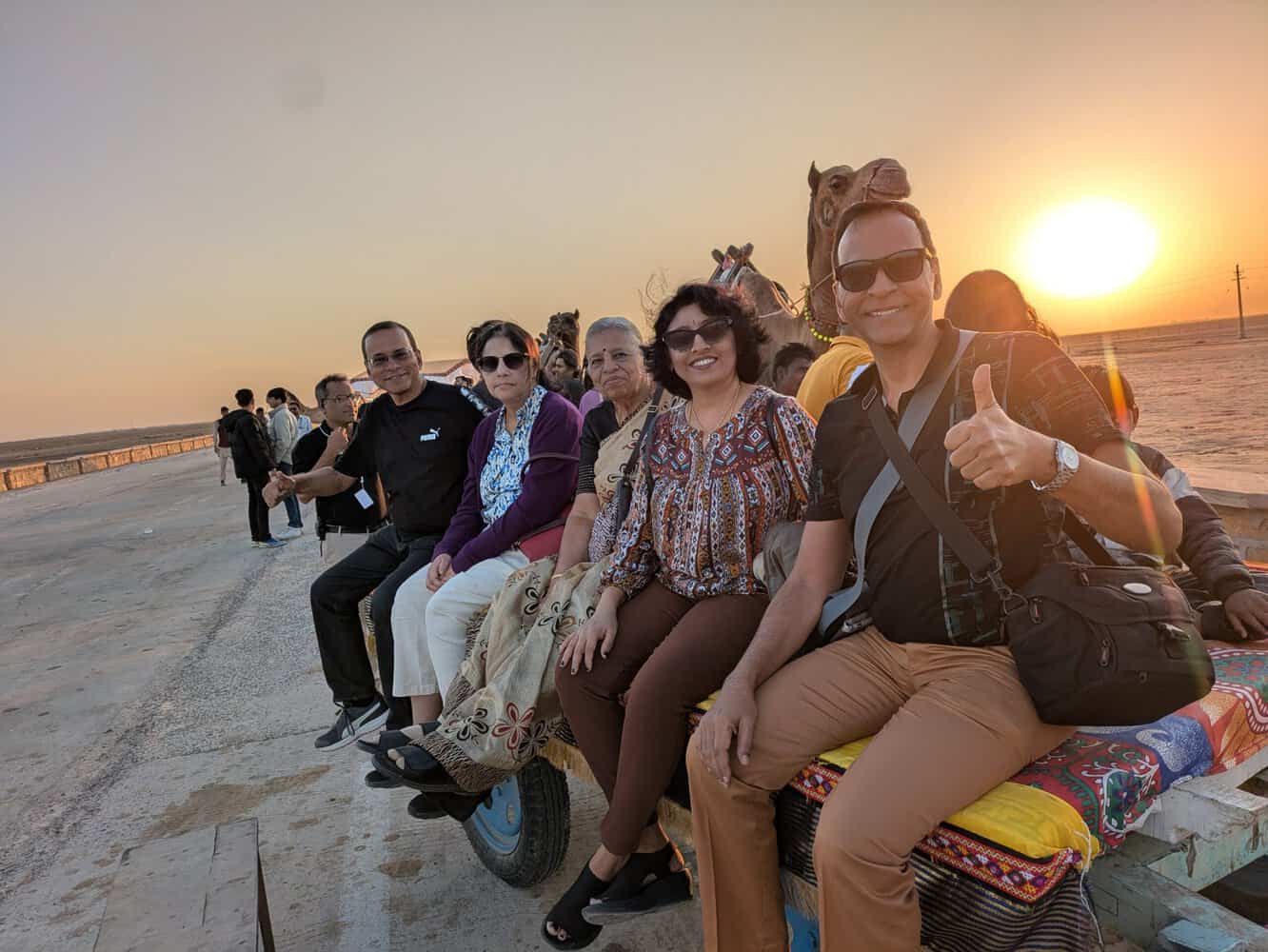
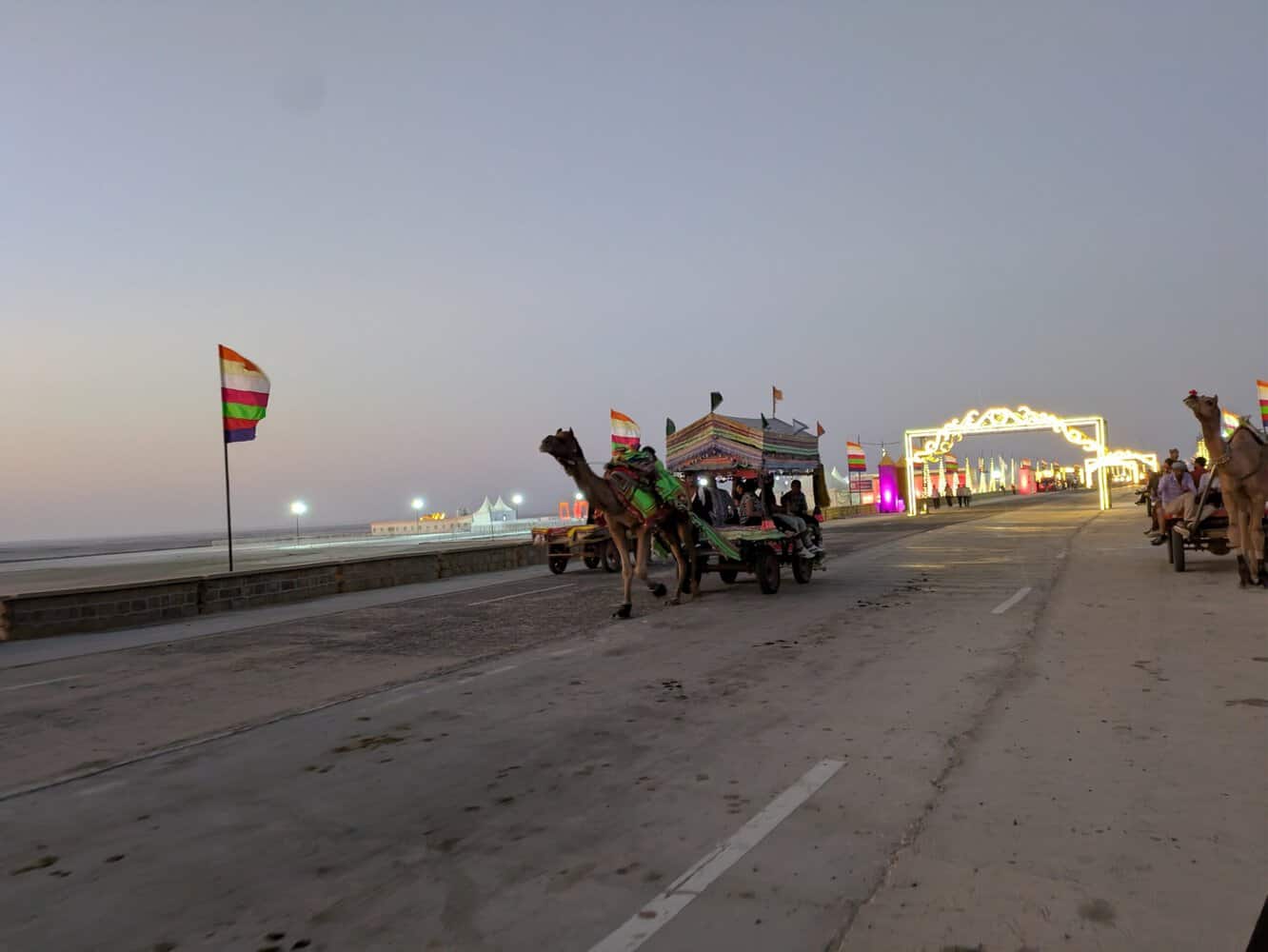
Gandhi Nu Gaam and Kala Dungar
‘Gandhi Nu Gaam’ is a village famous for handicrafts while Kala Dungar is the highest point in Kutch. I was pleasantly surprised to see that the village has been decked up for tourists. Looked colorful and neat. The village also has several traditional circular huts with thatched roof, called ‘Kutch Bhunga’, built from locally sourced material and to suit local climatic conditions. Few toilets have been specially built for visitors. If every village were like this in India, I would not mind packing up my bags and moving to a village! But all the other villages the bus passed by were just as is everywhere else-dusty and non descript with heaps of garbage lying around. I did not buy anything in the village as similar items were available in the Tent City.
Unimpressive scenery but a fun camel ride
The scenery on the journey to Kala Dungar was quite drab. The bus dropped us a little away from the peak and I hopped onto a camel for a bumpy ride all the way to the view-point. The ride can be a bit nerve wracking for some as the camel walks on a very narrow ledge for a short distance and passes very close to couple of trees and lighting poles. Paid INR 400 for a couple. One can also walk or take the jeep. I chose to walk on return.
Views are so-so but sunset was impressive
Tourists visit Kala Dungar for the view-point and the 400 year old Dattatreya temple. The view-point afforded a panoramic view of the Rann of Kutch Lake. The border area too was visible but through binoculars. The sunset, as usual, was visually appealing. We departed after the evening arti at the temple.
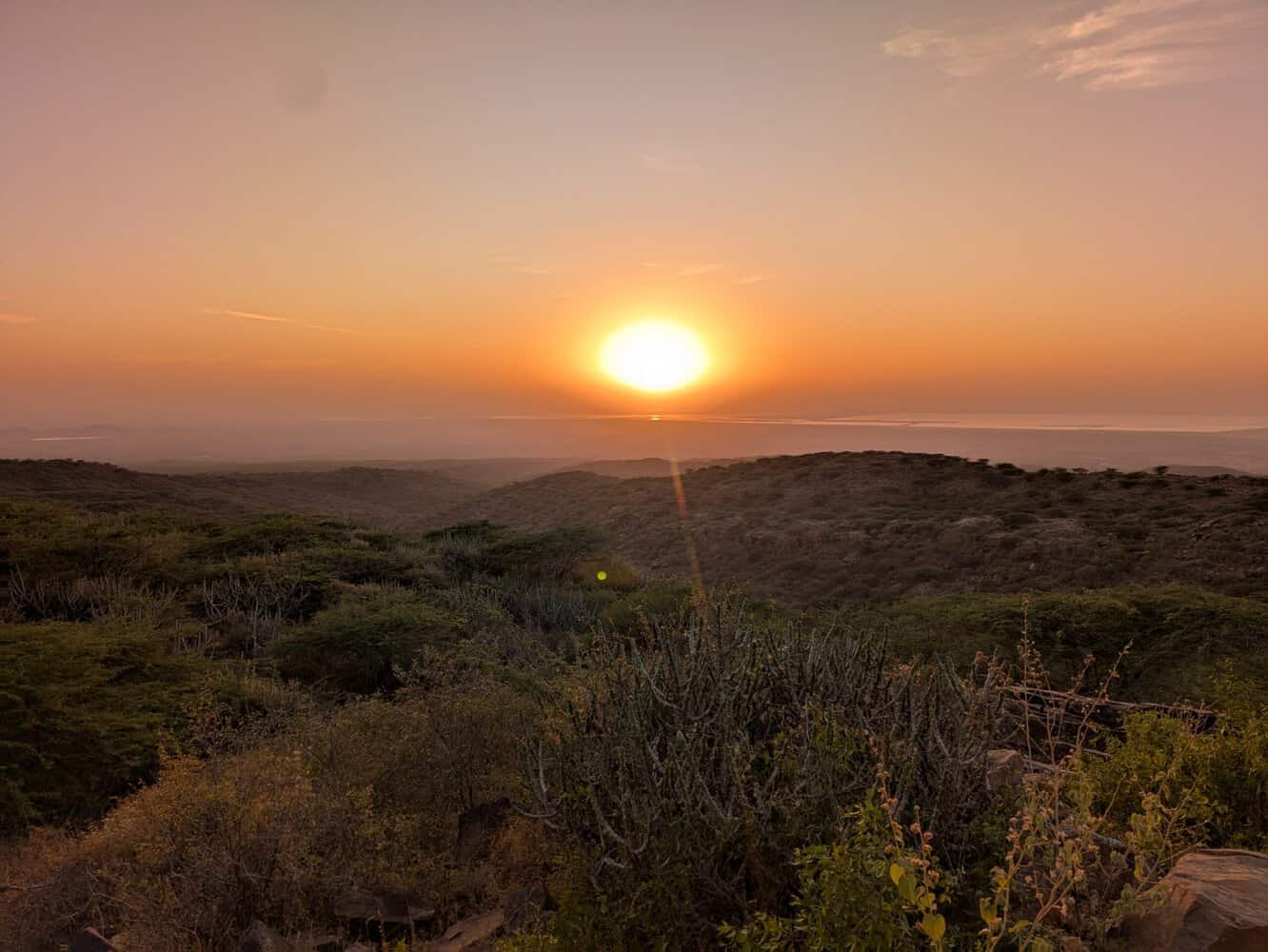

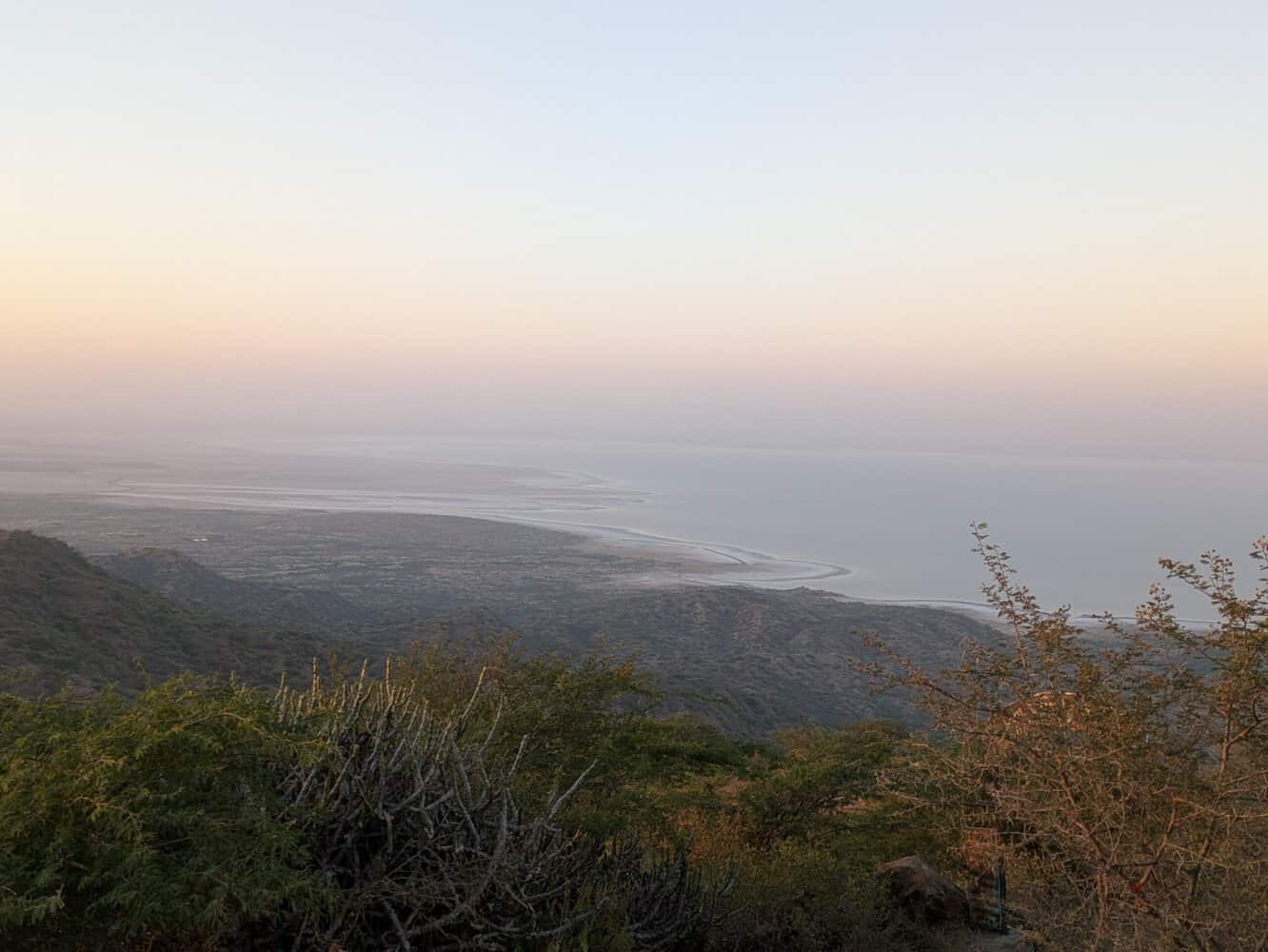
Dholavira and Road to Heaven
Dholavira is among the 5 largest sites of Harappan(Indus Valley) civilization and is a UNESCO World Heritage site. The site is in ruins, with no standing structure and the area is quite dusty. It is a very recent excavation, from 1989 to 2005. The descriptive boards put up at the sites are very informative and gives a sense of how life was about 4000-5000 years ago. The museum near the entrance too is very informative. We all studied about Harappan civilization in school and that is the main reason why I enjoyed wondering around the ruins. But the restroom near the museum was terrible which was very surprising given the care taken elsewhere in Kutch.
Dholavira is 90kms from the Tent City, about 2 hours drive and is located on an island in the Rann of Kutch Lake. We had lunch at an Evoke resort in Dholavira and while the food was good, the area outside was very dusty.

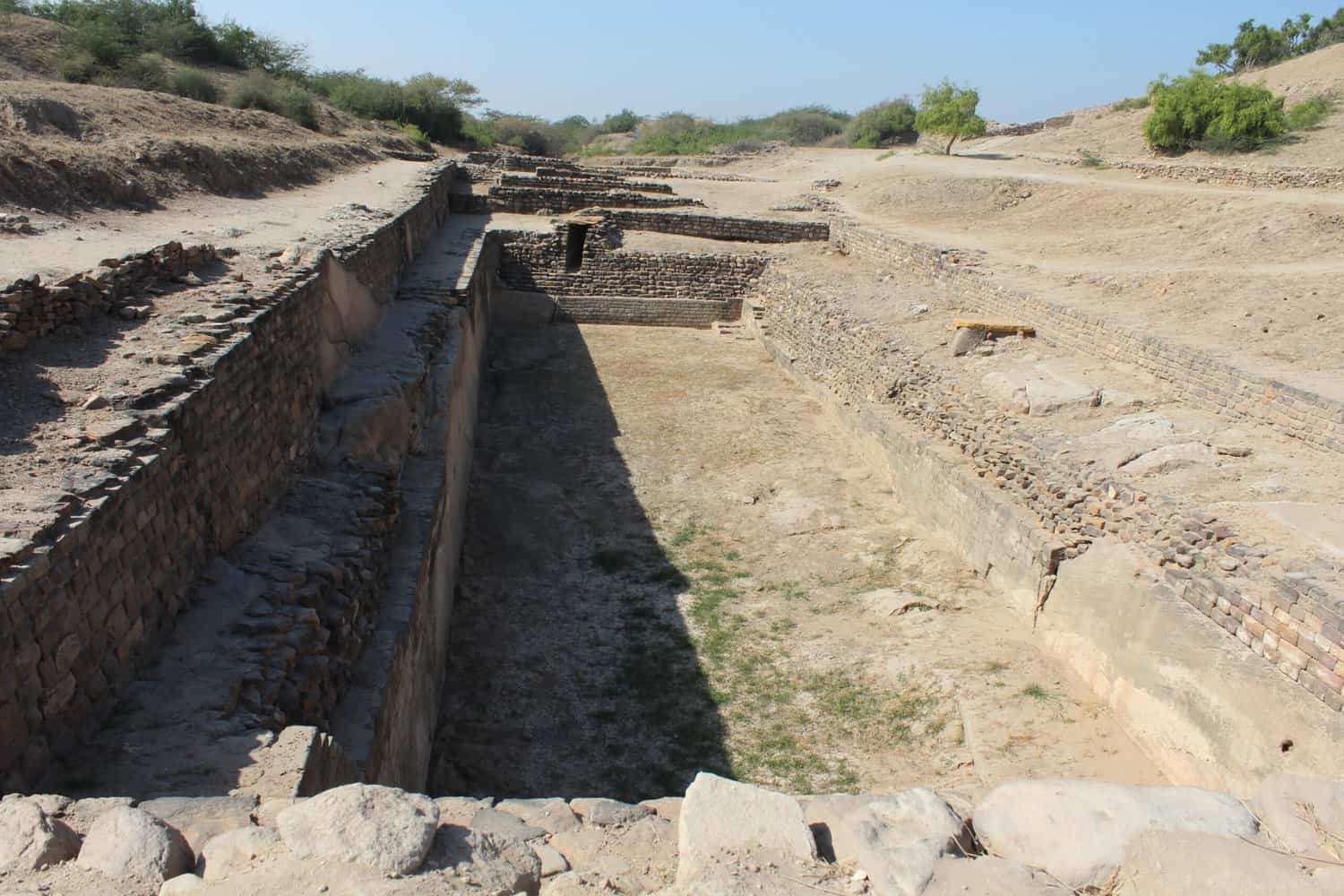
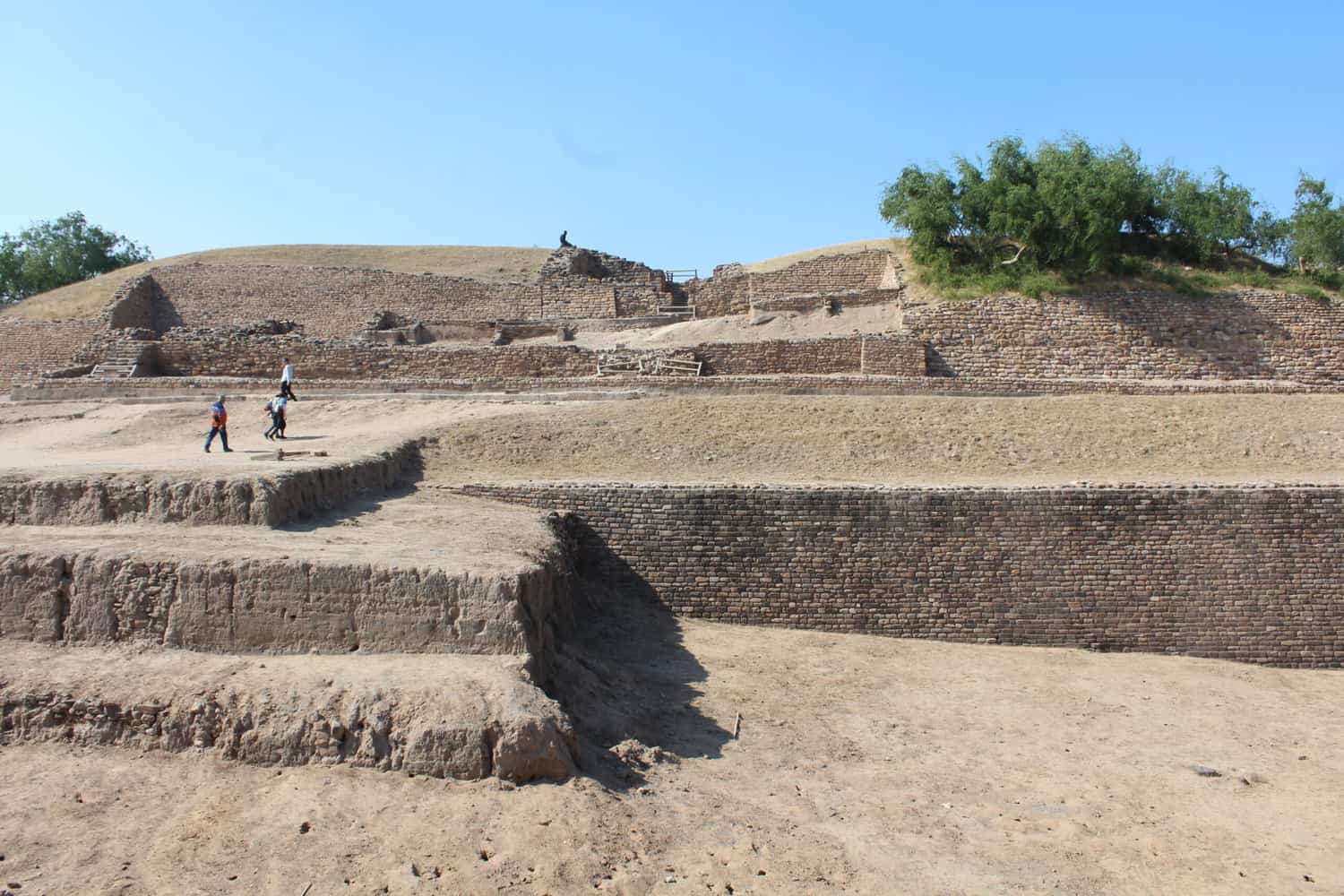
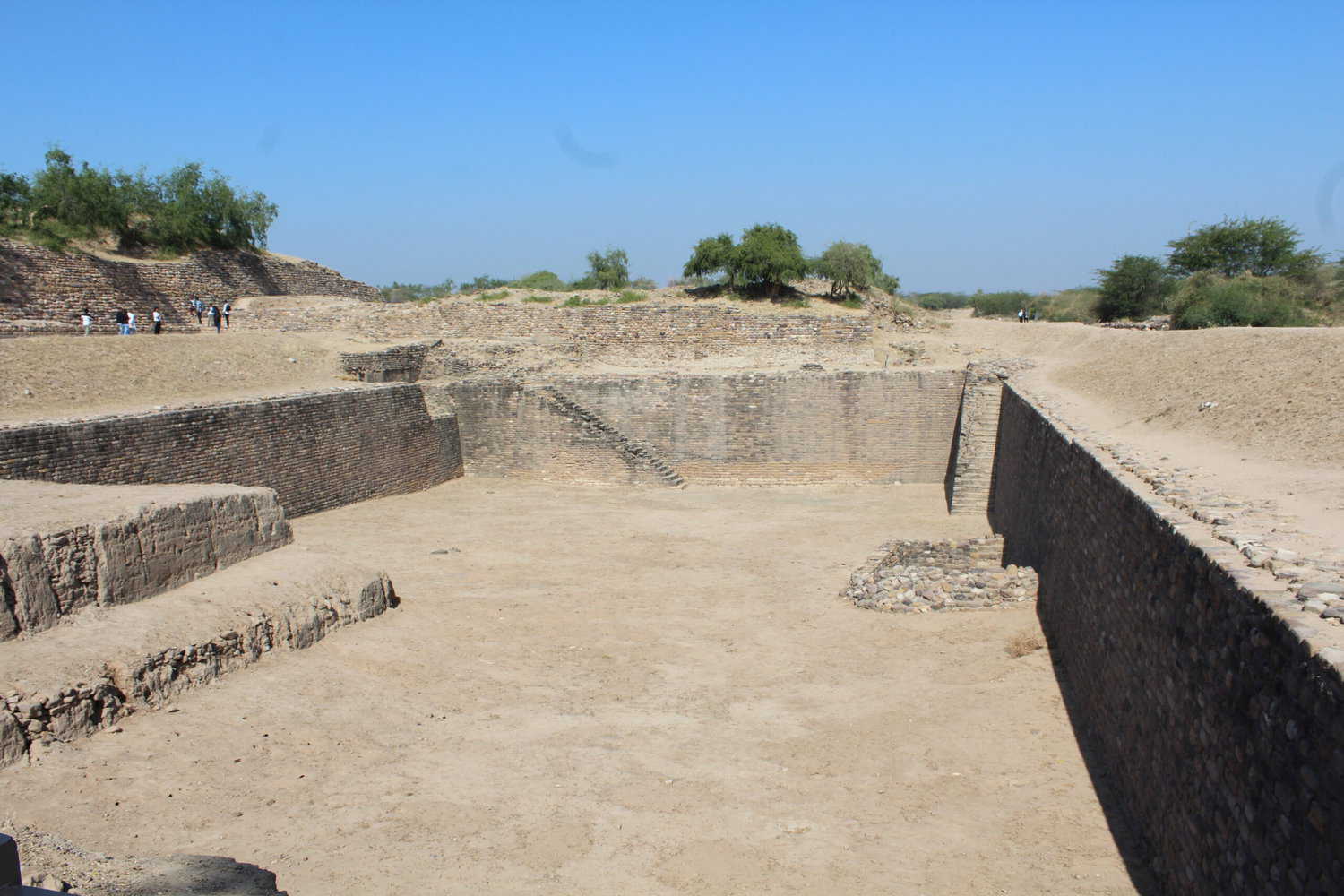
Road to Heaven is close to being magical
The best part of the visit was undoubtedly the 30 km long ‘Road to Heaven’ that passes through Rann of Kutch Lake. Rainwater fills up the lake during the rainy season. Thereafter, water slowly evaporates over time leaving behind salt crystals. When I visited in early December, parts of lake was covered with water and part was exposed salt bed which added to the charm of the lake. Lovely to look at and marvel at nature’s creation. Thoughtfully, there are a few points on this road from where visitors are allowed to step onto the dry lake bed. Walking on the lake bed is quite a different experience that watching it from the road.
The road to Heaven was opened only in 2023. Else a visit to Dholavira would have taken a long circuitous route, and would possibly be a non starter from the Tent City, given the time required.
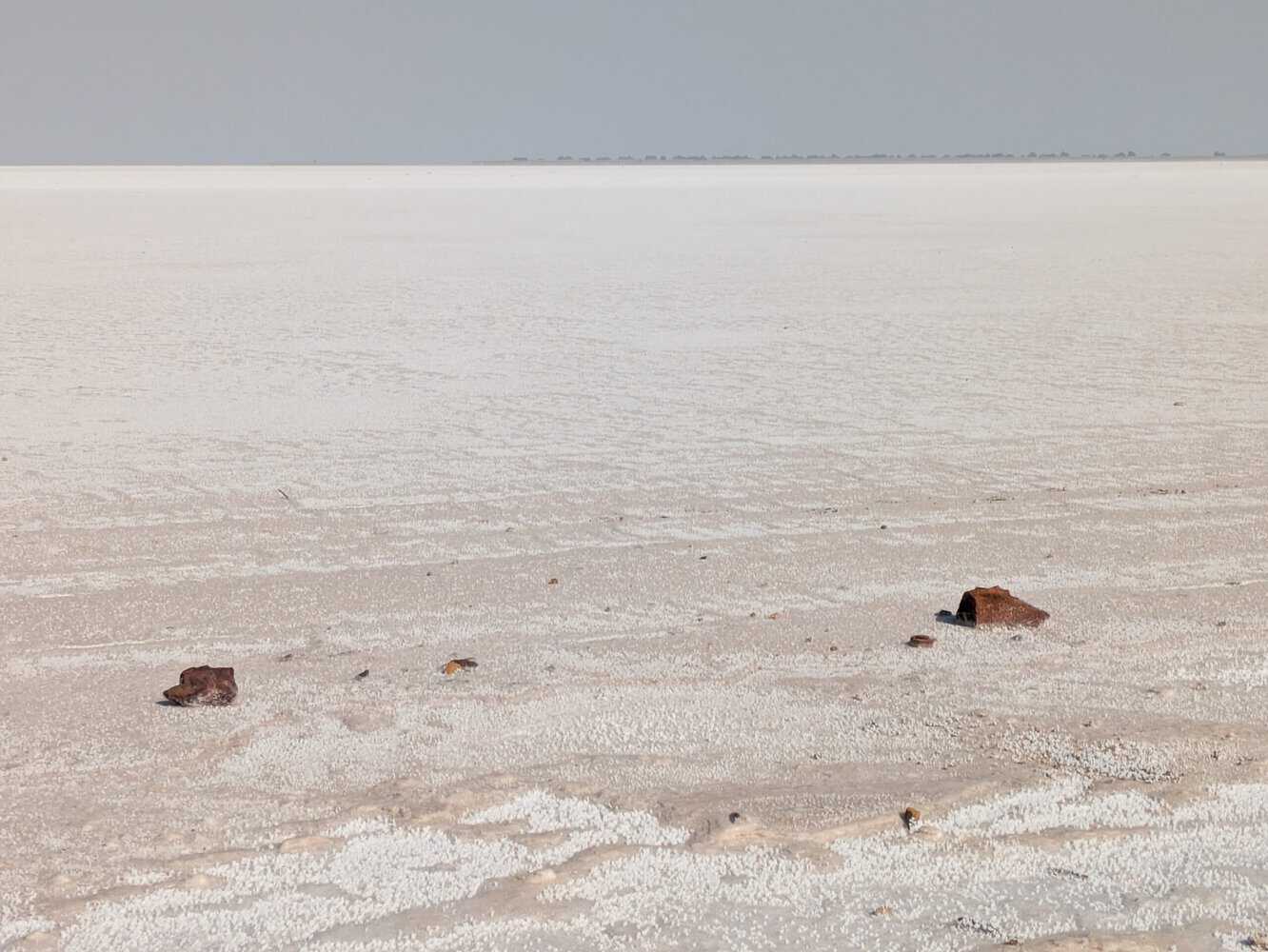

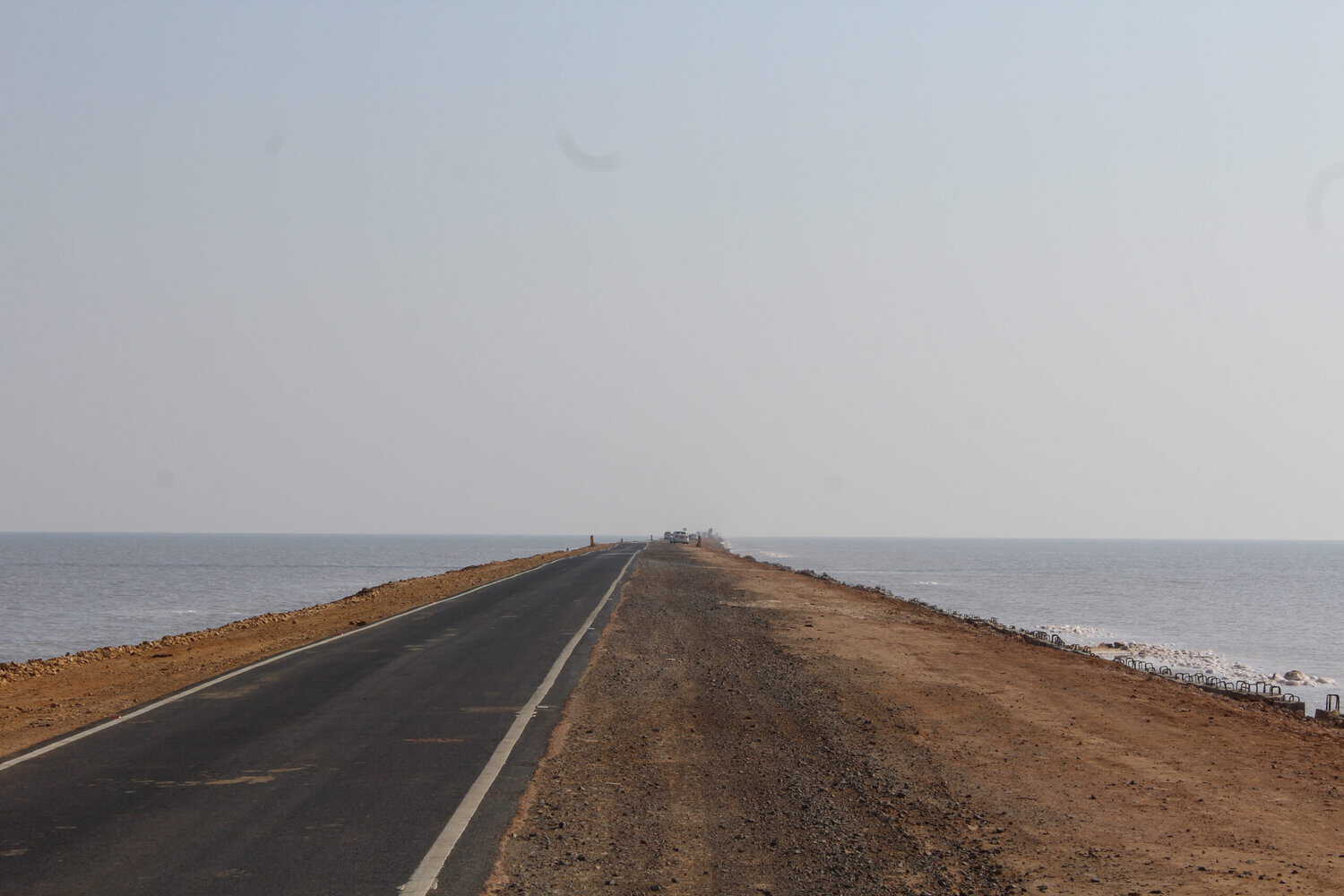

Other activities
- Stargazing– Bhuj is rated among the top places in India for star gazing. Costs 2k per person. The 2 hour session is conducted at a nearby village, and not from the Rann area.
- Motor paragliding and ATVs(All Terrain Vehicles) – Don’t know what it costs. Tickets can booked at the reception.
- Bicycles are also available for rent for a ride in the Rann. This may not be a bad idea if you wish to get further away from the road and enjoy the pristine white carpet.
- Camel rides in the White Rann – this is available only during full moon nights. Unfortunately, permits are not issued for other nights.
- Private trips from the Tent City to Kadiyo Dhro, Nirona village etc. This can be squeezed in if you have no inclination to explore the stalls set up inside and outside the Tent City. Or if you wish to skip Kala Dungar.
How to get to Dhordo?
The nearest airport as well as railway station is Bhuj, about 80 kms away with a driving time of ~90 minutes. The road is quite ok and one crosses the Tropic of Cancer between Dhordo and Bhuj. There is a signboard next to the highway but I missed it. No elaborate photo ops here, unlike few other locations around the world that indicate crossing the major lines of latitude.
By air, Bhuj is connected to only Mumbai and Ahmedabad. There are regular train services between Ahmedabad and Bhuj. From Ahmedabad airport, the Gujarat State Road Transport Corporation runs a Volvo service everyday morning to Dhordo during the Rann Utsav. But this is long drive, well over 8 hours.
Two other nearest options are Rajkot and Jamnagar but both are smaller airports with limited flight connectivity. Surprisingly, there are direct flights to Bengaluru from both these cities.
What else to see in Kutch/Gujarat?
Attractions in Kutch include:
- Kala Dungar(nothing very special and can be skipped in my view). Included in package;
- Dholavira including the road to Heaven(not to be missed). Included in package;
- Mandvi …did not visit but the attractions look good for one visit. Included in package;
- Great Indian Bustard Sanctuary/ Indian Wild Ass Sanctuary;
- Bhuj..mainly for Smriti Van Earthquake Museum;
- Kutch Desert Sanctuary for pink flamingos. During monsoon season only;
- Kadiyo Dhro. From the photos, does not look inviting.
Rann Utsav’s 3N package includes visits to Kala Dungar and Dholavira while Mandvi was included in the 4N package in the initially months but is missing now. A better option may be stay in Bhuj for 2-3 nights. Mandvi is just over an hour away by road. Overall, 4-5 nights is good for Kutch.
Smriti Van architecture is spectacular
In Bhuj, I could only visit Smriti Van Earthquake Museum. Built on a hill with several levels, the architecture is unique and quite spectacular. I had planned for an hour here but it took me 2.5 hours to exit. The museum has several sections and in each section, only one group comprising maybe 25-30 or so people are allowed in. While most sections were interesting and informative, couple of them on government interventions in the aftermath of the quake were an overkill. The highlight of the museum was in the last section that provided an ‘earthquake experience’ with 3D visuals.
The memorial to the earthquake victims is spread over a large area and will need additional time.
The Tent City package includes sightseeing at Smriti Van only if one opts for drop to Bhuj airport/railway station. I am not sure if that also includes entry into the Museum that otherwise costs INR 300 per adult. But it is unlikely given only 2 hours are allotted for Smriti Van.
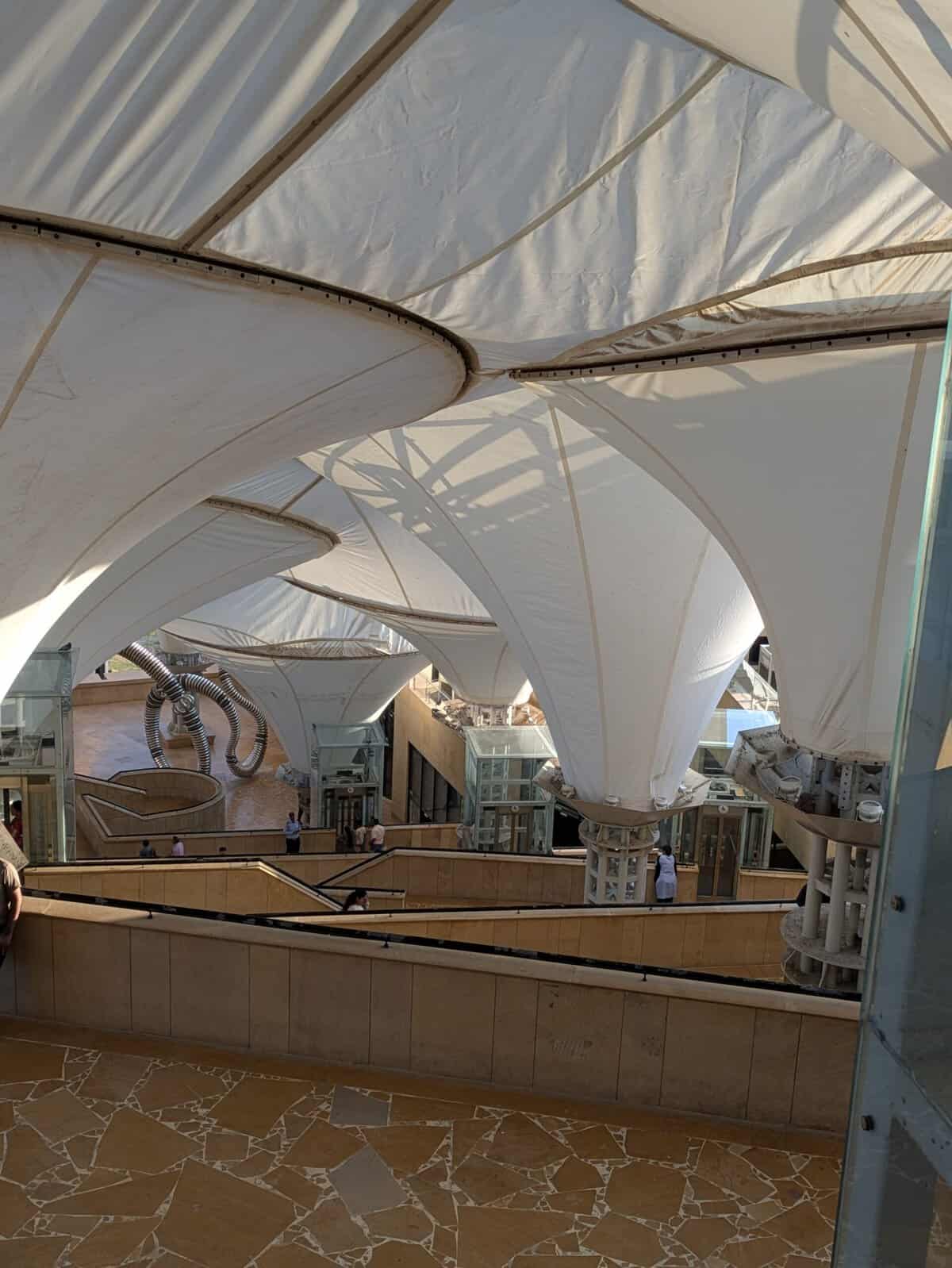
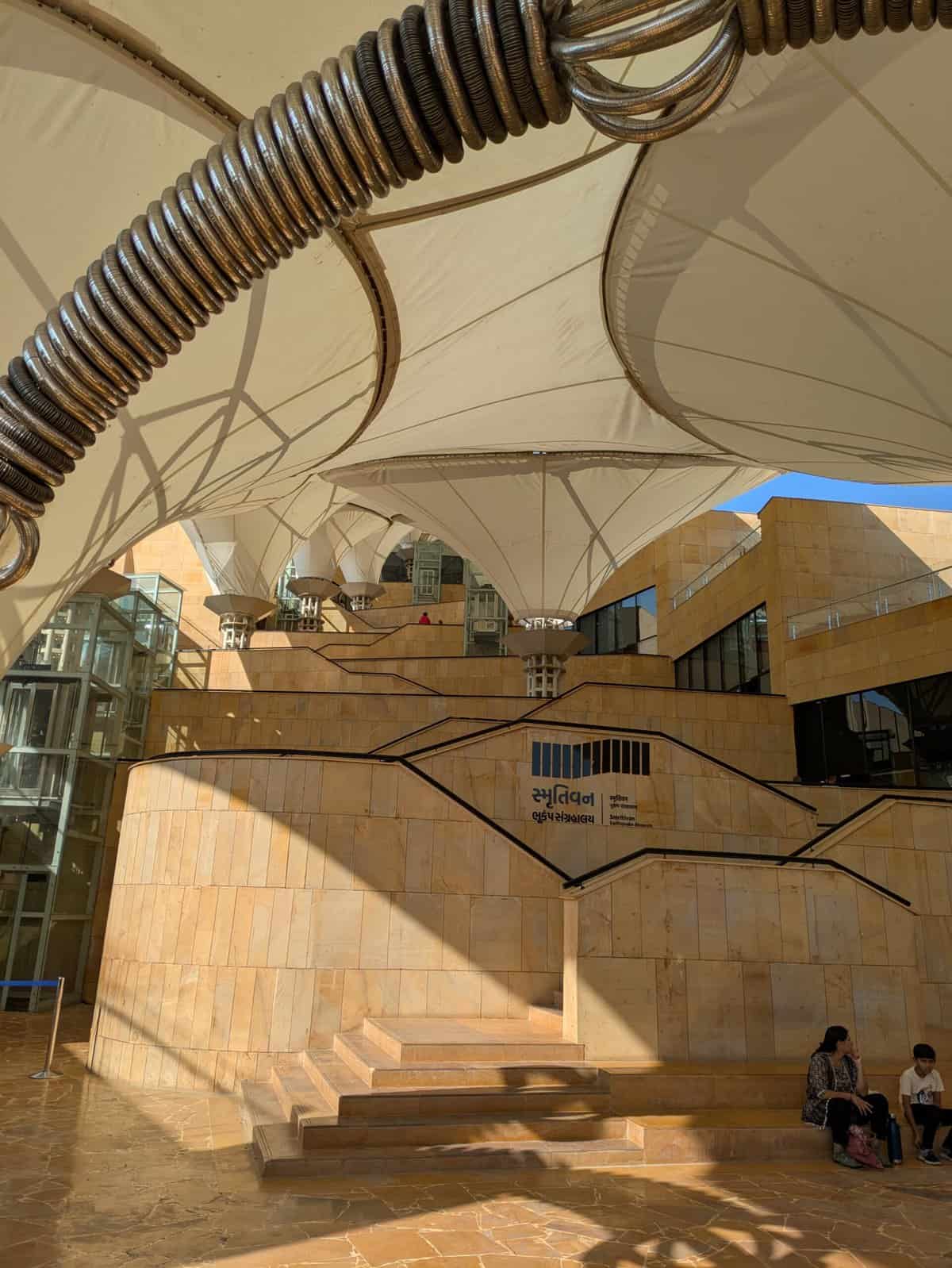
For Bhuj, one day is adequate
Other attractions listed for Bhuj include Swamynarayanan temple(skip if you have seen this in Ahmedabad, Rajkot or elsewhere), Aina Mahal and Prag Mahal. A full day is good enough for Bhuj.
Where to stay in Bhuj?
I did not find many branded hotels in Bhuj. There is Regenta Resort by Royal Orchid and Fern Residency from Fern Hotels and Resorts. I stayed at Ramee The Srinivas Palace. It was a new hotel and everything was nice except that the bath/toilet was tiny. Food was great. Most of these hotels cost ~5k per night.
My itinerary
I primarily wanted to visit Gir National Park before moving to Kutch. It was a very satisfying trip to Gir – with sightings of Asiatic lions and leopards.
I took the direct flight to Rajkot from Bengaluru and visited Junagadh, Gir and Somnath before driving to the Tent City, Dhordo. While I was keen on Dwarka, that would have meant additional day or two, given the distance. The road condition from Rajkot to Dhordo is about ok, with construction happening at several points. The distance of over 300kms was covered in about 7 hours, with one break for lunch. There was a lot of heavy container traffic as this is also the route to Kandla and Mundra ports. I reached the Tent City just in time for tea and departure for sunset point. The entire route is not exactly scenic but the presence of birds near the water bodies together with salt pans while passing through Little Rann made for some interesting views.
If travelling via Ahmedabad, Statue of Unity will be an option but will require 3 days at the minimum.
Shopping in Kutch
Kutch is famous for Bandhani work, block printing, embroidery, Rogan art, leather work and certain handicrafts. You can shop at the Tent city or in Nirona village or Gandhi Nu Gaam or Bhuj. I visited the home of Abdul Gafur Khatri, a national award winner, whose family in Nirona village has sustained Rogan Art since it was introduced from Persia over 400 years back. The art is unique and the paintings, on a cloth, cost INR few thosands to lakhs, depending on the size and intricacy.

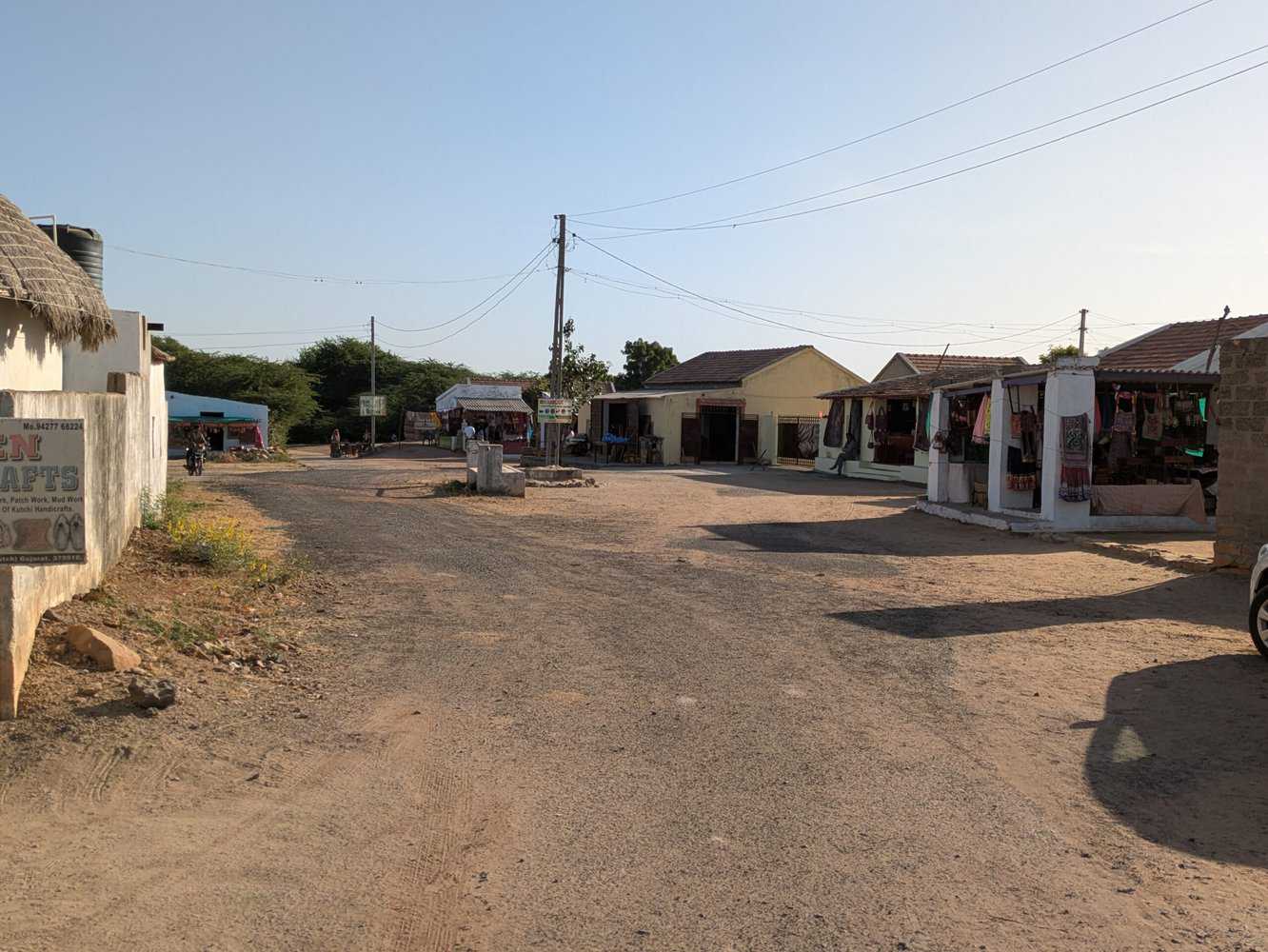
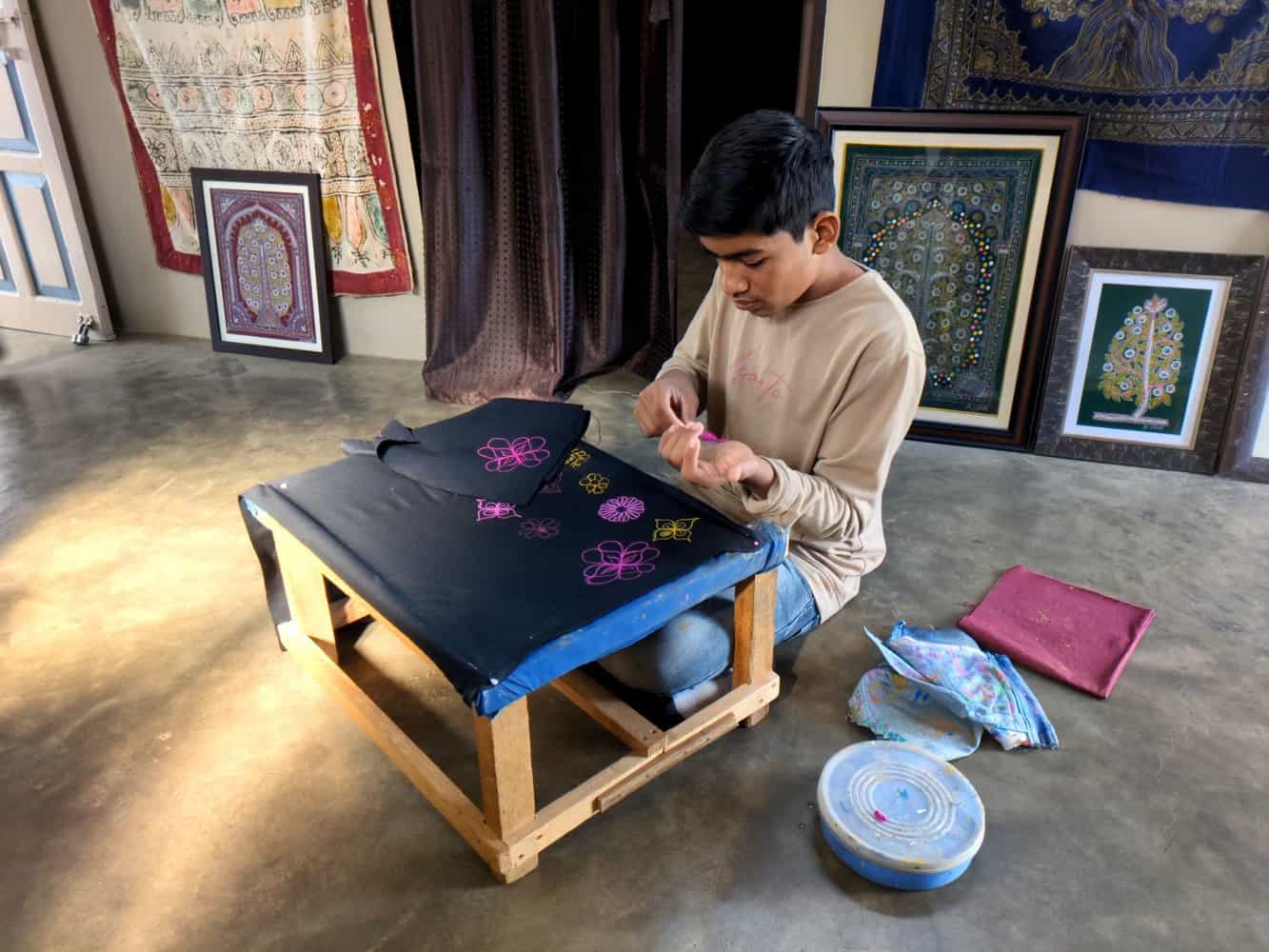
What else?
Carry cash
One cannot do without cash which is required paying for camel/jeep rides on excursions, tipping ‘camel’ and making certain purchases. Otherwise, UPI is the preferred mode to make payments while credit or debit cards are either viewed with disinclination or not accepted at all. Most shops inside and outside the Tent city accept UPI payments but some still ask for cash.
Gets chilly in the evenings
I visited in the first fortnight of December when the evenings were quite chilly. The cultural programs are held in the open, requiring warm clothing to sit through . Days were quite warm.
When to visit the Rann of Kutch?
Winter, from mid October to mid March is the best time as the weather is nice and the period coincides with Rann Utsav. But winter is also the peak season and most expensive. While prices are relatively cheaper in summer, the days will be quite hot. Monsoon season can also be good as Kutch receives only moderate rainfall. An added advantage of a monsoon visit is that the ‘flamingo city’ comes alive only then.
Is Rann a must visit? What about Rann Utsav?
As they say, the Rann comes alive during Rann Utsav, so a visit to Rann of Kutch during Rann Utsav feels a bit special, including the stay at the Tent City. This is true especially for families with kids. But while the Rann and the Rann of Kutch Lake are unique and a must visit, Rann Utsav by itself is not.
For more information:
https://www.gujarattourism.com/kutch-zone/kutch.html
